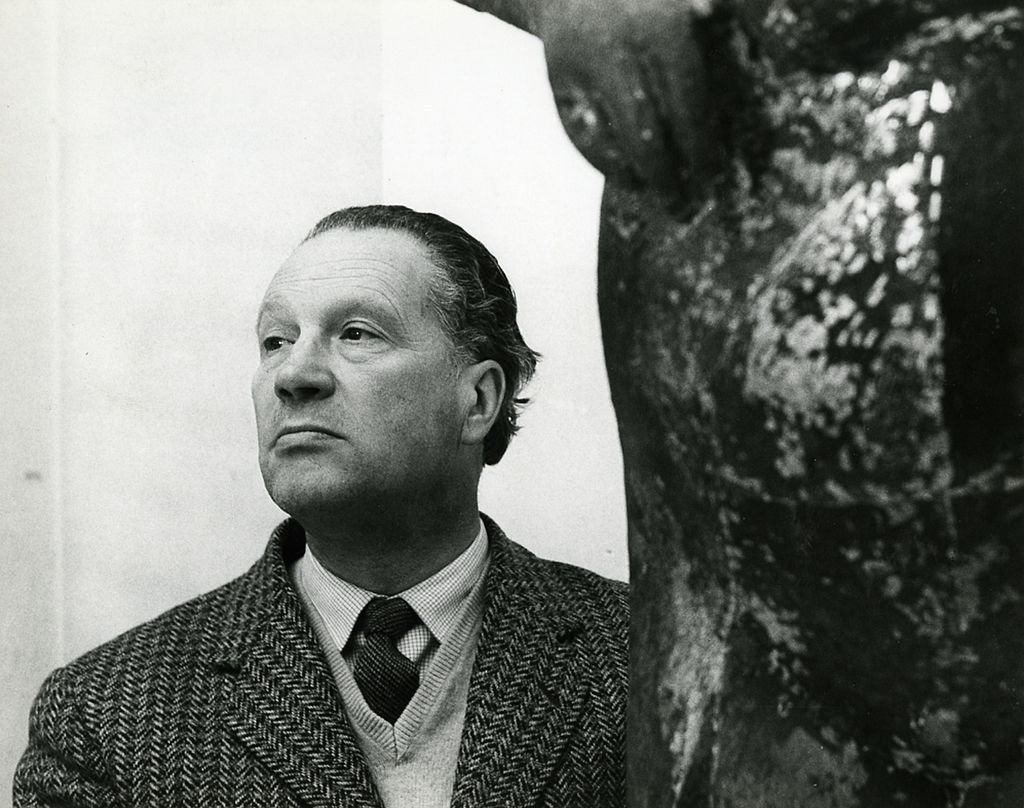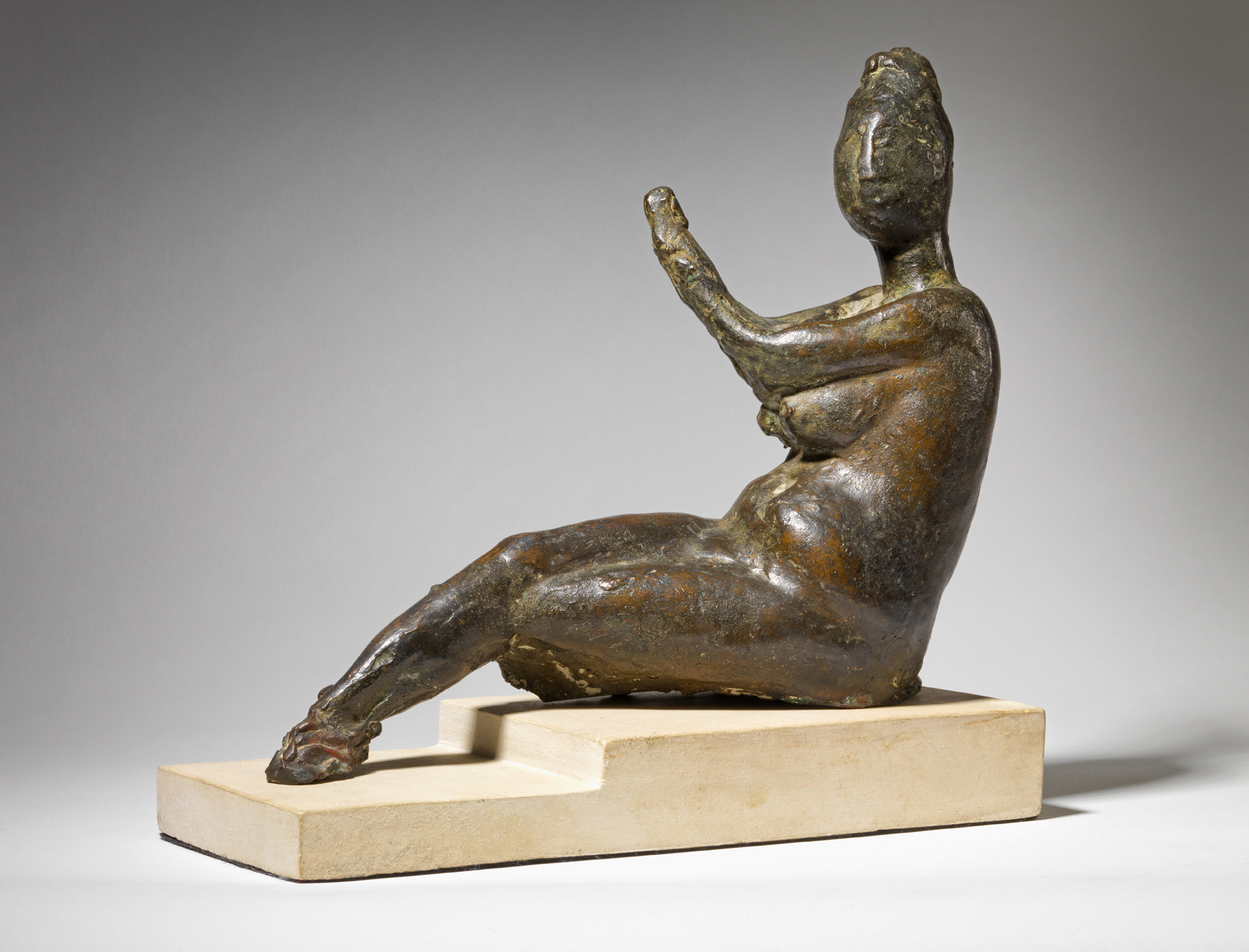Each work has its own space, which should neither be conceived as a sort of cage nor regarded as extending to infinity. – Marino Marini
By the time of his death in 1980 Marini was certainly considered the greatest Italian sculptor of his generation and was the equal of Henry Moore in international reputation. Indeed, the two artists knew each other (there is a bust of Moore by Marini), and affinities in their work are evident in the present piece. Though Marini’s ‘trademark’ was the figure on horseback, he was equally adept at rendering the reclining figure.
There is an archaism in the work, which is typical of Marini, evocative of archaeological fragments from earlier civilisations. Unlike Moore, whose figures rest resoundingly on the earth, Marini treated the base as simply the exhibiting ‘prop’ for a work, from which the integrity of the figure existed independently.
Marino Marini was born in 1901 in the town of Pistoia in Tuscany. From 1917 he attended the Accademia di Belle Arti in Florence, devoting himself primarily to sculpture from about 1922.
At this time his work was influenced by Etruscan art and the sculpture of Arturo Martini who Marini succeeded as professor at the Scuola d’Arte di Villa Reale in Monza, Milan, in 1929, where he remained until 1940. During this period he frequently visited Paris, where he knew Massimo Campigli, Giorgio de Chirico, Alberto Magnelli, and Filippo Tibertelli de Pisis.
In 1936 Marini moved to Tenero-Locarno, Switzerland; during the following few years the artist often visited Zurich and Basel, where he became a friend of Alberto Giacometti, Germaine Richier, and Fritz Wotruba. In 1936 he received the Prize of the Quadriennale of Rome. He accepted a professorship in sculpture at the Accademia di Belle Arti di Brera, Milan, in 1940. He participated in Twentieth-Century Italian Art at the Museum of Modern Art in New York in 1944. Curt Valentin began exhibiting Marini’s work at his Buchholz Gallery in New York in 1950, on which occasion the sculptor visited the city and met Jean Arp, Max Beckmann, Alexander Calder, Lyonel Feininger, and Jacques Lipchitz. In 1946 he settled permanently in Milan.
He visited London on his return to Europe, as the Hanover Gallery were holding a solo exhibition of his work. Here he met Henry Moore. In 1951 a Marini exhibition travelled from the Kestner-Gesellschaft Hannover to the Kunstverein in Hamburg and the Haus der Kunst in Munich. In 1952 he was awarded the Grand Prize for Sculpture at the Venice Biennale and the Feltrinelli Prize at the Accademia dei Lincei in Rome in 1954. One of his monumental sculptures was installed in the Hague in 1959.
Retrospectives of Marini’s work took place at the Kunsthaus Zürich in 1962 and at the Palazzo Venezia in Rome in 1966. His paintings were exhibited for the first time at Toninelli Arte Moderna in Milan in 1963–64. In 1973 a permanent installation of his work opened at the Galleria d’Arte Moderna in Milan, and in 1978 a Marini show was presented at the National Museum of Modern Art in Tokyo. Marini died on August 6, 1980, in Viareggio.



